
News
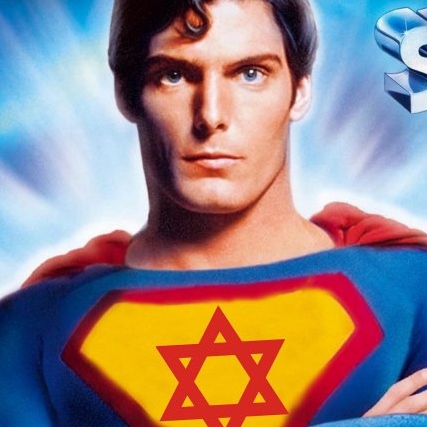
Hebrew roots of top Superhero
Published
10 years agoon
By
adminRICH GOLDSTEIN
This piece is published verbatim with pictures and sub-headings added by SAJR. It was written by Rich Goldstein and published on 16 August in THE DAILY BEAST, Newsweek Magazine’s website. It can be read here, or by clicking the link above.
Superman is America in that he was created by hard-working, exploited immigrants. An examination of the Jewish roots of the Man of Steel.
Superman is as American as apple pie, in that both have their origins in the Middle East.
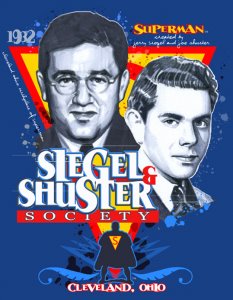 Apples, because they are thought to have been first domesticated in Turkey, and Superman, because of his oftentimes overlooked Jewish heritage.
Apples, because they are thought to have been first domesticated in Turkey, and Superman, because of his oftentimes overlooked Jewish heritage.
RIGHT: Jerry Siegel
and Joe Shuster
Superman’s possible Judaism shouldn’t be a surprise. The hero’s creators, Jerry Siegel and Joe Shuster, were the children of Jewish immigrants.
The comic book industry, where they spent a significant portion of their young careers, was created in New York by Jews like Max Ginsburg, Bob Kahn, and Jacob Kurtzberg, who hid their ethnicity behind names like Gaines, Kane, and Kirby.
Over the years there have been scores of books and articles on the subject with punny names like Up, Up, and Oy Vey or “Mensch of Steel.”
From Jew to Christ-like – same thing
However, recent portrayals of the character, particularly the 2013 film Man of Steel, focus on the Christ-like, messianic qualities of the Metropolis Marvel. In the run up to the movie’s release, faith based press relations company Grace Hill Media invited religious figures around the nation to attend select pre-release screenings, posted clips online, and provided notes for possible faith-based discussion topics related to the film.
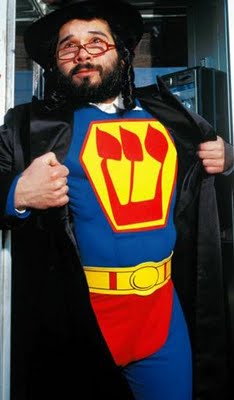 One example is focused around themes of fatherhood and instructs dads to “take https://www.sajr.co.za/images/default-source/default-album/supermench-segal-amp-schster.jpg” class=”sfImageWrapper”>
One example is focused around themes of fatherhood and instructs dads to “take https://www.sajr.co.za/images/default-source/default-album/supermench-segal-amp-schster.jpg” class=”sfImageWrapper”>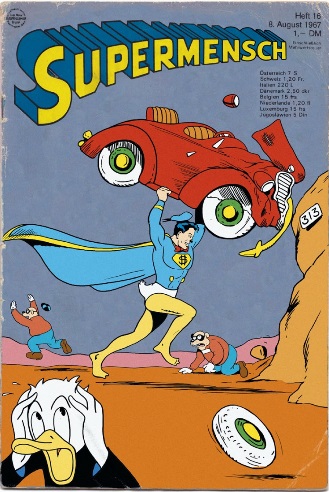 RIGHT: This Sixties spoof is a German comic where Superman has always translated into Supermensch and does not refer to a Jewish ‘mensch’ specifically
RIGHT: This Sixties spoof is a German comic where Superman has always translated into Supermensch and does not refer to a Jewish ‘mensch’ specifically
Perhaps the most important link to a Hebrew superhero is Superman’s identity as a partially asimilated immigrant. The 1930s New York that produced the world’s first modern superheroes was awash in recent Jewish refugees fleeing the pogroms of 19th century Europe.
According to “The American Jewish Experience in the Twentieth Century: Antisemitism and Assimilation” by Jonathan D. Sarna and Jonathan Golden at Brandeis University, “In 1900, more than 40 percent of America’s Jews were newcomers, with ten years or less in the country” and the next quarter century saw a wave of immigration as “another 1.75 million Jews would immigrate to America’s shores, the bulk from Eastern Europe.”

Jerry Siegel and Joe Shuster were the children of those immigrants.
The Siegels, Mitchell and Sarah, had come from Lithuania and settled in Cleveland, Ohio, while the Shusters, Julius and Ida, were from Rotterdam and Kiev.
They first immigrated to Toronto. When Joe was about ten years old, the Shusters moved again, this time to Cleveland.
Around 1931 the two young men met while attending Glenville High School (home of the fighting Tarblooders) through one of Jerry’s cousins and began a friendship centered around a mutual love of science fiction, fantasy, and comics.
Inspired by Little Nemo, Tarzan, and Flash Gordon
At age 16, both Siegel and Shuster were already accomplished comic artists, displaying many of the talents and themes that would resurface in Superman.
Shuster drew a comic strip about a character named Jerry the Journalist, and Siegel sold his works under the pen name Hugh Langley (“or whatever” Siegel told a Nemo Magazine interviewer in 1983).
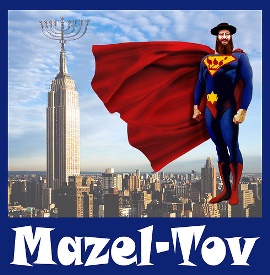 Other early collaborations between the pair included a comic strip called “Interplanetary Police,” characters who had X-ray vision, and even a character named Snoopy (almost twenty years before the Charles Schulz dog of the same name).
Other early collaborations between the pair included a comic strip called “Interplanetary Police,” characters who had X-ray vision, and even a character named Snoopy (almost twenty years before the Charles Schulz dog of the same name).
RIGHT: Everyone and his Rabbi want to get in on a good thing
They drew inspiration for their stories from the popular sci-fi characters of the time including Little Nemo, Tarzan, and Flash Gordon, all orphan characters, like the superhero Siegel and Shuster would eventually create.
Another American legend with Ohioan roots may have inspired Superman’s creators is John Henry.
While southern US states usually lay claim to the folk hero, the real Henry allegedly worked on the Chesapeake and Ohio railroad in the aftermath of the Civil War.
Even if the real Henry never existed, thousands of black workers built the railroad tracks crisscrossing Ohio.
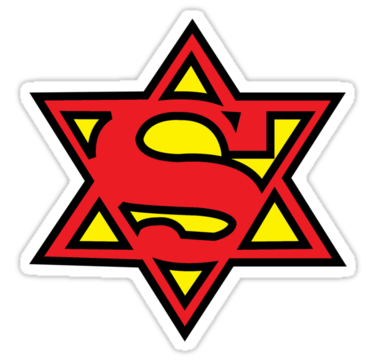 Many were skilled artisans, but some were compelled into service as forced prison laborers. A lack of work safety features and services meant many thousands of such laborers died on the job, and not because they were racing steam drills.
Many were skilled artisans, but some were compelled into service as forced prison laborers. A lack of work safety features and services meant many thousands of such laborers died on the job, and not because they were racing steam drills.
One potential origin for the name “Tarblooder,” which the Glenville High School Jerry Siegel and Joe Shuster attended still uses as a nickname, is the laborers who would drive railroad spikes into track ties held down with tar. The hammer strikes would splatter tar on their uncovered skin causing lacerations and bleeding. The ability of these men to withstand pain, already well conditioned by constant physical activity, led to their mythic status as super men.
Zishe Breitbart, the Jewish strongman
It was also during their time in Ohio that Mel Gordon, writing for Reform Judaism Magazine in 2011, suggested it would have been impossible for Siegel and Shuster to not have become acquainted with Zishe Breitbart, the Jewish strongman.
In 1923, Breitbart played both Cleveland and Toronto when Siegel and Shuster were only nine years old. There is no record of either artist attending the shows, but it would have been unlikely they were unfamiliar with the early 20th century Heracles. Gordon writes, “The Cleveland News raved that he was ‘more interesting than the Eiffel Tower.’ During the Christmas season, he performed before 85,000 spectators at the New York Hippodrome, then the ‘largest playhouse in the world,’ smashing all previous attendance records.”
Renowned for feats of strength destined to become hallmarks of the comic book Superman, Breitbart dazzled audiences with all the strongman classics: bending steel bars, breaking “unbreakable” chains, lifting elephants. In at least one of the Jewish strongman’s American tours, Breitbart was billed as “the Superman of the Ages.”
Other Jewish candidates for inspiring Superman include the mythological Golem. In the modern era, the character is associated with the 17th century pogroms in the Jewish ghettos of Prague. Like Superman, the Golem was a creature of intense physical strength and its primary function was to defend the Jews of what was then part of the Holy Roman Empire.
He can’t really hurt Hitler through his comics
In his fictional account of Superman’s creation, The Amazing Adventures of Kavalier & Clay, author Michael Chabon also makes the connection to the Golem. His protagonist, Josef Kavalier, escapes Prague by hiding in the Golem’s coffin and creates a similar character in his comic books.
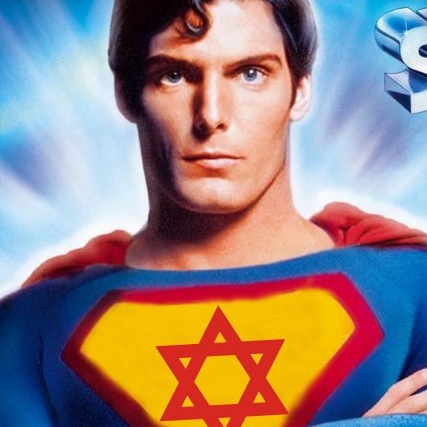 Writing about the motif in “Illumination and Escape: Writing and Regeneration in 21st Century Jewish-American Literature” Dr. Windy Counsell Petrie says, “the Golem signifies a faith in the power of artistic creation…For Joe Kavalier, the universe he creates in drawing his comic books is one in which he is empowered to do something about the Nazis…Though Joe realizes that he cannot literally hurt Hitler through his comic books, the novel does imply that his comics do have power to influence public opinion.”
Writing about the motif in “Illumination and Escape: Writing and Regeneration in 21st Century Jewish-American Literature” Dr. Windy Counsell Petrie says, “the Golem signifies a faith in the power of artistic creation…For Joe Kavalier, the universe he creates in drawing his comic books is one in which he is empowered to do something about the Nazis…Though Joe realizes that he cannot literally hurt Hitler through his comic books, the novel does imply that his comics do have power to influence public opinion.”
Due to rising global anti-Semitism in the late 19th and early 20th centuries, the Golem had resurfaced in popular Jewish culture. The same year Siegel and Shuster were born, Gustav Meyrink’s Der Golem, a fictional account of the Prague Golem, appeared on bookshelves to international acclaim. Over the next decade, the Golem appeared in at least one poem, an opera, and a German film. Although Siegel and Shuster never acknowledged the connection, Golems are often referenced by the material from which they are made. They are men of clay, similar to Superman’s alias, The Man of Steel.
Cleveland left another, more permanent mark on the Superman series. In 1932, Jerry Siegel’s father Mitchell was killed by a still unknown assailant while working at the family’s second hand clothing store. Police accounts from the time are allegedly unclear, but the elder Siegel was either shot, or suffered a heart attack, when three men attacked him during a robbery. A Daily Mail article about the attack states the oldest surviving artwork featuring Superman shows the caped hero “flying to the rescue of a man being held-up at gunpoint by an armed robber…The link with Siegel’s father seems painfully clear.”
Lois Lane modelled on Joanne Siegel
Siegel never mentioned his father’s death as an inspiration for Superman, but Joanne Siegel, the model who served as the visual inspiration for the original Lois Lane (and who dated Joe Shuster before marrying Jerry Siegel) once told the Cleveland Plain Dealer: “I remember the day I met Jerry in Joe’s living room. Jerry was the model for Superman. He was standing there in a Superman-like pose.” The young Siegel, having inherited his father’s looks, went on to define the characteristics Superman still possesses, from the dark, curly hair to the square, chiseled jaw.
Shuster refreshed the Superman character design in 1945, again using a Jewish model for inspiration. While on vacation in the Catskills, the comic artist met a furniture salesman named Stanley Weiss, the son of Jewish immigrants. The Daily Beast’s Tim Teeman interviewed Weiss’s son, David, about the incident. When shown pictures of his father at a young age, David Weiss told Teeman, he thought, “That’s definitely Superman, but is it my father?” In 2013, the younger Weiss donated rare sketches from the modelling session to a one day exhibit at the Centre for Jewish History in New York.
“I had crushes on several attractive girls who either didn’t know I existed or didn’t care I existed. As a matter of fact, some of them looked like they hoped I didn’t exist. It occurred to me: What if I was real terrific?”
Fairbanks & Lloyd inform Superman aesthetic
In the 1930s, Siegel and Shuster moved to New York City. The pair lived in an apartment described by early Superman artist Wayne Boring as “a real rat-hole right on the elevated (subway)… He had a room with a cot that you had to walk over to get to the other end! And there was the elevated right outside his window!”
While in New York, Siegel and Shuster spent much of their free time at the movies, and it was their two favorite actors, Douglas Fairbanks and Harold Lloyd, who would inform much of the Superman/Clark Kent aesthetic. Both Fairbanks and Lloyd were among the most famous Jewish entertainers of their time. Unlike the Jewish actors who changed their names to broaden their appeal to gentile American audiences, Fairbanks, born Douglas Ullman, received his “Americanized” name when his father, Charles Ullman, abandoned his wife and children, Ella Adelaide Marsh Fairbanks.
The German director Fritz Lang’s 1926 visit to Manhattan is often credited with inspiring the director’s most famous work, Metropolis. Hardcore sci-fi fans, Siegel and Shuster loved the movie and they used its title as a name for the fictional world their hero would inhabit.
“Clark Kent grew out of my private life” -Siegel
The character was also imbued with more explicit details from its creator’s lives. Siegel told Nemo Magazine:
Siegel: “Clark Kent grew not only out of my private life, but also out of Joe’s. As a high school student, I thought that someday I might become a reporter, and I had crushes on several attractive girls who either didn’t know I existed or didn’t care I existed. As a matter of fact, some of them looked like they hoped I didn’t exist. It occurred to me: What if I was real terrific? What if I had something special going for me, like jumping over buildings or throwing cars around or something like that? Then maybe they would notice me. That night when all the thoughts were coming to me, the concept came to me that Superman could have a dual identity, and that in one of his identities he could be meek and mild, as I was, and wear glasses, the way I do.
The heroine, who I figured would be a girl reporter, would think he was some sort of a worm; yet she would be crazy about this Superman character who could do all sorts of fabulous things. In fact, she was real wild about him, and a big inside joke was that the fellow she was crazy about was also the fellow whom she loathed. By coincidence, Joe was a carbon copy (of me).”
Shuster: “I was mild-mannered, wore glasses, was very shy with women.”
Nebbish Clark Kent is as popular as ever
Superman fans may well recognize those features in Clark Kent, but they are essential elements of Jewish entertainers throughout the last century. Today, the nebbish is as popular as ever, appearing in diverse entertainments from Sheldon on The Big Bang Theory to The Simpsons’ Professor Frink. Even the less overtly Hebraic actors who have portrayed Superman, like Dean Cain and Christopher Reeve, maintained the klutzy comedy of Clark Kent’s constant bumbling. Particularly noteworthy is the apotheosis of Superman as nebbish in made-for-TV It’s a Bird…It’s a Plane…It’s Superman, a 1975 musical adventure featuring the Man of Steel based on the 1966 Broadway play of the same name.
But Siegel and Shuster’s superhero character, while couched in childlike innocence, was a radical strike back against what Rabbi Bruce Warshal calls “the worst period of anti-Semitism in our https://www.sajr.co.za/images/default-source/default-album/supermench.jpg” class=”sfImageWrapper”> It was no small source of satisfaction for Siegel and Shuster later when the Superman radio serial became instrumental in mocking the Klan’s activities. As recently profiled in the Comedy Central show Drunk History, secret Klan phrases were exposed by Superman’s bumbling radio villains, thereby decreasing the secretive organization’s power of mystique. Other than a few draft scripts, Siegel and Shuster’s involvement with the radio show was minimal.
It was no small source of satisfaction for Siegel and Shuster later when the Superman radio serial became instrumental in mocking the Klan’s activities. As recently profiled in the Comedy Central show Drunk History, secret Klan phrases were exposed by Superman’s bumbling radio villains, thereby decreasing the secretive organization’s power of mystique. Other than a few draft scripts, Siegel and Shuster’s involvement with the radio show was minimal.
Jerry Siegel and Joe Shuster were ten years old when Senator Ellison DuRant Smith gave his famous “Shut The Door” speech on immigration in the lead up to the passage of the 1924 Immigration Act. The Senator claimed passing the act would allow the U.S. to “assimilate what we have, and let us breed pure American citizens and develop our own American resources.” The immigration act not only lowered the number of immigrants allowed into the U.S., it also barred immigration from any country whose citizens were deemed “non-white.” Had the act passed earlier, it would have prevented millions of southern and eastern European immigrants from coming to America, including the Siegels and Shusters. It’s passage in the 1920s would trap millions in an increasingly hostile Europe, on the eve of a frenzy of anti-Semitic genocide.
Lex Luthor promoted Nazi ideal of übermensch
That is why, for 74 years Superman’s primary nemesis has not been another alien or superhero, but megalomaniacal xenophobic billionaire Lex Luthor. On multiple occasions, Luther has reiterated Senator Smith’s language, engaged in murderous, racially motivated vigilantism, and generally promoted the Nazi ideal of übermensch. In Siegel and Shuster’s first Superman comic, titled “The Reign of the Superman,” the “Superman” character appeared as Lex Luthor later would, bald, villainous, and visually similar to the F.W. Murnau version of Dracula (another fictional character with secret Jewish origins) from the 1922 film Nosferatu.
Although revealing any link to Judaism would have doomed the Superman franchise, several early stories focus on Superman fighting Nazis and proudly declaring himself a “non-Aryan” as he socked Adolph Hitler on the jaw. The comics led propaganda minister Joseph Goebbels to accuse Superman of being a Jew, and at least one vicious 1940 editorial in the SS newspaper Das schwarze Korps was titled “Jerry Siegel Attacks!”
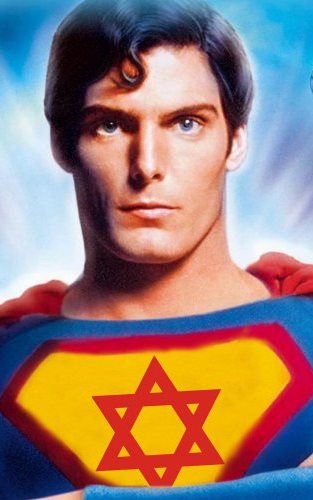 While American nativism and anti-Semitism declined after World War II, so did the overt Jewishness of Superman. Flagrant anti-Semitism fell out of favor and was replaced by a closeted, unspoken bigotry. As John Turturro’s Sid Litz says in the adaptation of Franz Lidz’s Unstrung Heroes, “‘I like Ike.’ [was] secret gentile code for ‘I hate kikes.’”
While American nativism and anti-Semitism declined after World War II, so did the overt Jewishness of Superman. Flagrant anti-Semitism fell out of favor and was replaced by a closeted, unspoken bigotry. As John Turturro’s Sid Litz says in the adaptation of Franz Lidz’s Unstrung Heroes, “‘I like Ike.’ [was] secret gentile code for ‘I hate kikes.’”
Sued DC
As their contract was about to expire, Siegel and Shuster sued DC for control of their character. Having sold the rights to the company for $130 in 1938 ($2,197.49 USD in 2014, adjusting for inflation), DC responded by firing the pair.
Years of lawsuits ended multiple times in multiple settlements. One promised yearly salaries for the artists of about $25,000. More recently, surviving members of the Siegel family have successfully gained a percentage of future revenues from Warner Entertainment and DC Comics as well as another settlement of several million dollars. However, a 2013 9th Circuit Court of Appeals court ruling did not grant the same rights to the remaining Shusters.
In a way, Senator Smith and Lex Luthor were perversely right. Not about immigration. All but in the fevered dreams of power mad politicians and their deluded followers is a world without immigration possible. People move. Smith and Luther were right in that using anti-immigrant rhetoric is a time-tested means of hiding the bigoted fears of small minded people, desperately fighting to mask their mediocrity and maintain authority in the face of an overwhelming and incomprehensible force. Smith is interred at St. Luke’s Cemetery in Lee County South Carolina. All interested parties are hereby invited to dance on his grave.
By slow means, the Jewish sensibilities of two boys from Ohio illustrated the movement of an entire country. The Jews who migrated to the United States have assimilated into its society, as have their creations. Superman isn’t just the Last Son of Krypton—he’s an American icon.




